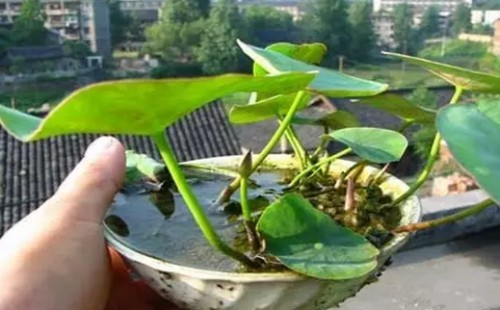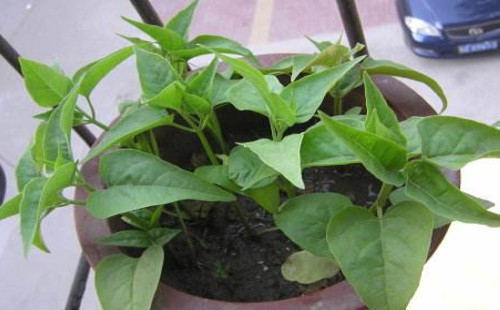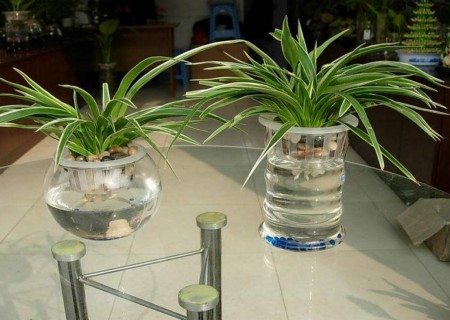How to grow bowl lotus-the planting method of bowl lotus
The leaves of the bowl lotus are round and sturdy, and the flowers are large and beautiful, giving people a sense of gorgeous flowers and beautiful leaves. As a potted plant, it is very beautiful. Moreover, it has the character of "mud but not stained", which has been so holy in people's hearts for a long time, and it can be regarded as the representative of truth, goodness and beauty.

Nelumbo nucifera, also known as potted lotus, is a more suitable variety of lotus as a potted plant. The huge flowers are 7-8 centimeters long, but the height of the leaves is 20-25 centimeters, and the round green leaves are about 15 centimeters in diameter, so they are very suitable for potted cultivation and placed in the courtyard or even indoors for viewing. So, how to grow bowl lotus? The following editor will share with you the planting method of bowl lotus.
First of all, potted bowl lotus should be planted at an appropriate time, usually in early April, but there are often some differences in temperature in different regions, so we can make flexible choices in advance or delay according to the local temperature environment. After determining the time for planting bowl lotus, we can carry out the planting process.
1. Seed shelling
The bowl lotus seed is wrapped in a hard black shell, which is difficult to sprout naturally, so we often use artificial shell breaking to promote its smooth budding. However, the shell should be operated carefully in the process of shelling. after all, the shell can only be broken when a relatively large external force is applied, and if the operation is not careful, it is easy to damage the seeds in the shell. In particular, it is necessary to avoid damaging the germ in the shell, which is the basis of seed germination.
Second, soaking seeds to accelerate germination
After the seeds in the shell are taken out intact, we should soak the seeds in time to improve the germination efficiency of the seeds. Usually put the seeds on a shallow plate and inject an appropriate amount of water to just submerge the seeds, and then put the shallow plate in the brighter light of the windowsill to promote germination. During the budding period, it is necessary to change the water frequently to keep the water quality clean, generally changing the water once every morning and evening. After a few days, the seeds will swell after being fully absorbed, and buds will protrude from the cracks in the shell. After sprouting, the water level should not be too deep with the growth of the buds.
Prepare the container
The best container for potted bowl lotus is a special lotus pot or lotus jar with a diameter of more than 25 cm and a height of more than 20 cm. If the selected container is too small, it will not be able to meet the growth requirements of the bowl lotus in the later stage; if the choice is easy to be too large, several different varieties of lotus can be implanted in the easy. Therefore, the choice should be big rather than small.
Fourth, making pond mud
Practice has proved that in order to prepare high quality pond mud to promote the growth of bowl lotus, a more scientific soil allocation method is to take some dried pond mud, bean cake water, plant ash water, animal hoof water and bone powder, and then prepare according to the ratio of 100-100-2-1-2-1-6-1-1, mix well and use. This kind of soil matching scheme is very suitable for the growth of bowl lotus. However, as a family pot cultivation, it is more difficult to prepare such high-quality soil, so we can according to the actual situation, we can prepare the soil close to the above effect.
Fifth, plant bowl lotus
Put an appropriate amount of prepared soil in the container, and then press the budding lotus seeds one by one into the soft soil. After all, the previously prepared soil is so soft that it can press the seeds directly into the soil that is close to mud. But when pressing the seed, you need to keep the emerging buds facing up to avoid covering the soil. Then inject an appropriate amount of water into the container, pay attention to the water level is not too high, it is appropriate to shallow water. Usually pay attention to timely replenishment of water, until the buds after the leaves stand up.
VI. Ventilation and light transmission
In the daily maintenance and management process, we need to ensure that the pot bowl lotus environment can maintain good ventilation and light transmittance. Because the lack of light, bowl lotus is not normal photosynthesis, it is naturally difficult to blossom, thus losing the ornamental value of potted plants. Usually, the more sufficient the light we provide, the more prosperous the bowl lotus blossoms, so it is appropriate to put the bowl of lotus in the balcony which can receive full light for maintenance. And if the environment is ventilated smoothly, it avoids the occurrence of damp, hot and airtight, thus restraining the occurrence of diseases and insect pests.
7. Promoting standing leaves
As the buds continue to grow, floating leaves will soon appear on the water surface of the container, and the original water level can be raised to a height of 3-5 cm, in order to promote the lotus leaves in the bowl. At the same time, it is also necessary to timely salvage the water platform and algae in the container, so that the light can enter the water and increase the temperature of the soil in the basin, which is more beneficial to the lotus leaves in the bowl. Of course, after standing leaves, we need to continue to raise the water level until we reach the mouth of the basin. When the bowl lotus grows 2-3 vertical leaves, the yellowing old leaves floating on the water can be removed to maintain the ventilation and light transmission effect in the basin, which is more conducive to promoting flowering.
8. Water conservation and wind prevention
Water is indispensable in the growth process of bowl lotus, after all, its leaves are huge and need to consume a lot of water, so it is necessary to always maintain a suitable water level, otherwise the leaves of bowl lotus are easy to be scorched and yellow due to dehydration. At the same time, we also need to take timely measures to avoid the strong wind to avoid blowing the leaves over and down. After all, the stems and branches of the bowl lotus are relatively soft, and we have to support the big leaves.
9. Blooming and overwintering
Bowl lotus usually blossoms after two months, but for some varieties, it usually takes five standing leaves to produce buds and flowers. After entering autumn, as the temperature drops gradually, lotus roots will grow from the bottom of the container, and the basin soil will protrude obviously. Therefore, the water level in the basin should also be reduced appropriately, and usually the soil surface can be kept with a very shallow layer of water. When the temperature is too low, the bowl lotus will go into a dormant state, at this time, we need to timely remove the residual flowers, cut off the dead leaves, and then move to a place where the windowsill can receive light to keep warm and warm, and at the same time pour out the excess water in the basin to ensure safe and smooth passage through the winter.
Time: 2019-05-23 Click:
- Prev

Planting method of potted Thunder Flower
Landmine flowers are mostly used for courtyard greening and can also be planted as potted plants. Flowering begins in July and ends in November. The flowers bloom in the evening with rich colors and fragrance. As a pot appreciation, the management is also very simple, and there is no need to take good care of it, even if it is rough breeding.
- Next

Can Magnolia lanceolata be hydroponically cultured?-hydroponic method
Many friends like to keep their hearts at home, which can be watched on the one hand and purify the indoor air environment on the other. The cultivation of Magnolia has the advantages of low price, easy survival and convenient maintenance, but what we see most is potted by soil culture, so can Magnolia be hydroponically cultivated? actually
Related
- Fuxing push coffee new agricultural production and marketing class: lack of small-scale processing plants
- Jujube rice field leisure farm deep ploughing Yilan for five years to create a space for organic food and play
- Nongyu Farm-A trial of organic papaya for brave women with advanced technology
- Four points for attention in the prevention and control of diseases and insect pests of edible fungi
- How to add nutrient solution to Edible Fungi
- Is there any good way to control edible fungus mites?
- Open Inoculation Technology of Edible Fungi
- Is there any clever way to use fertilizer for edible fungus in winter?
- What agents are used to kill the pathogens of edible fungi in the mushroom shed?
- Rapid drying of Edible Fungi

